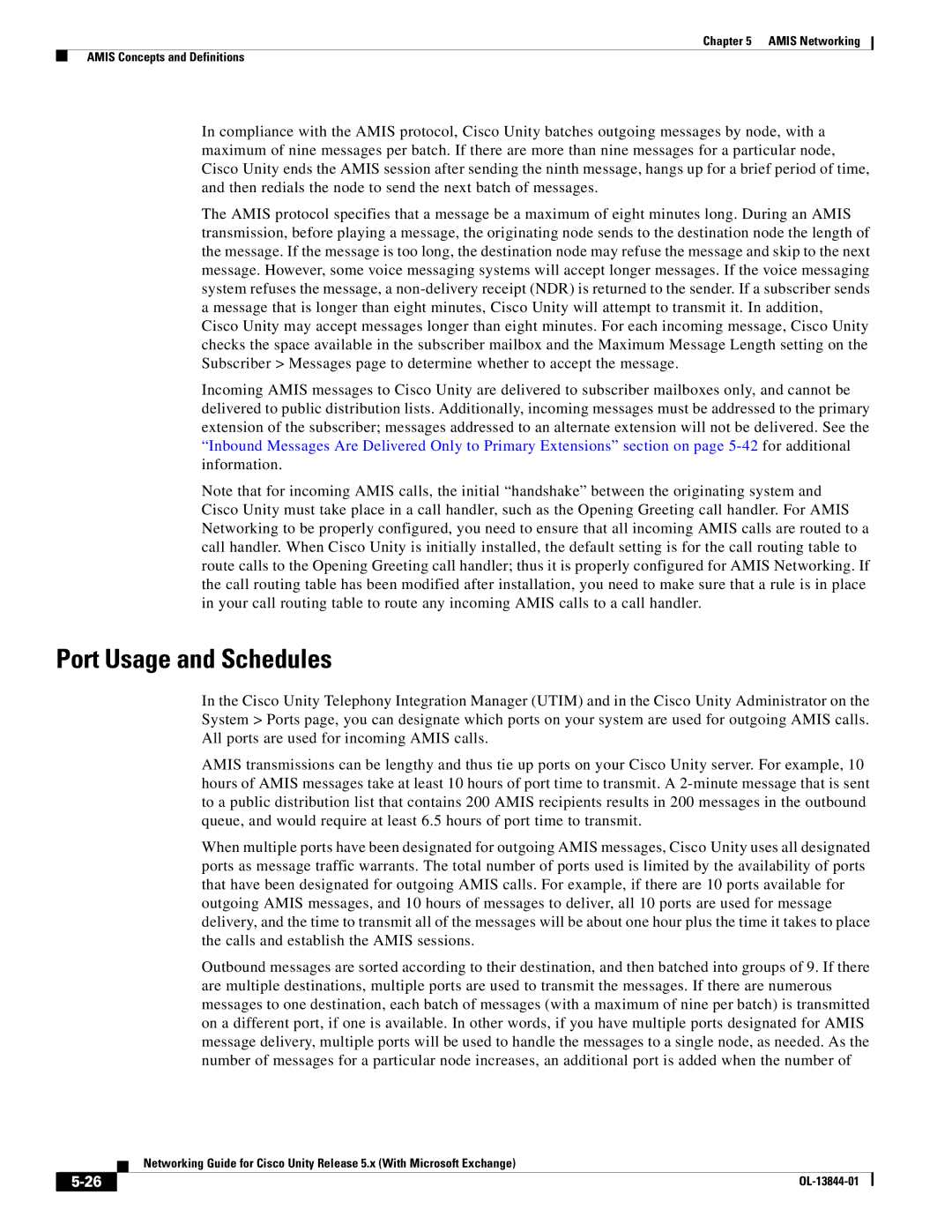
Chapter 5 AMIS Networking
AMIS Concepts and Definitions
In compliance with the AMIS protocol, Cisco Unity batches outgoing messages by node, with a maximum of nine messages per batch. If there are more than nine messages for a particular node, Cisco Unity ends the AMIS session after sending the ninth message, hangs up for a brief period of time, and then redials the node to send the next batch of messages.
The AMIS protocol specifies that a message be a maximum of eight minutes long. During an AMIS transmission, before playing a message, the originating node sends to the destination node the length of the message. If the message is too long, the destination node may refuse the message and skip to the next message. However, some voice messaging systems will accept longer messages. If the voice messaging system refuses the message, a
Incoming AMIS messages to Cisco Unity are delivered to subscriber mailboxes only, and cannot be delivered to public distribution lists. Additionally, incoming messages must be addressed to the primary extension of the subscriber; messages addressed to an alternate extension will not be delivered. See the “Inbound Messages Are Delivered Only to Primary Extensions” section on page
Note that for incoming AMIS calls, the initial “handshake” between the originating system and Cisco Unity must take place in a call handler, such as the Opening Greeting call handler. For AMIS Networking to be properly configured, you need to ensure that all incoming AMIS calls are routed to a call handler. When Cisco Unity is initially installed, the default setting is for the call routing table to route calls to the Opening Greeting call handler; thus it is properly configured for AMIS Networking. If the call routing table has been modified after installation, you need to make sure that a rule is in place in your call routing table to route any incoming AMIS calls to a call handler.
Port Usage and Schedules
In the Cisco Unity Telephony Integration Manager (UTIM) and in the Cisco Unity Administrator on the System > Ports page, you can designate which ports on your system are used for outgoing AMIS calls. All ports are used for incoming AMIS calls.
AMIS transmissions can be lengthy and thus tie up ports on your Cisco Unity server. For example, 10 hours of AMIS messages take at least 10 hours of port time to transmit. A
When multiple ports have been designated for outgoing AMIS messages, Cisco Unity uses all designated ports as message traffic warrants. The total number of ports used is limited by the availability of ports that have been designated for outgoing AMIS calls. For example, if there are 10 ports available for outgoing AMIS messages, and 10 hours of messages to deliver, all 10 ports are used for message delivery, and the time to transmit all of the messages will be about one hour plus the time it takes to place the calls and establish the AMIS sessions.
Outbound messages are sorted according to their destination, and then batched into groups of 9. If there are multiple destinations, multiple ports are used to transmit the messages. If there are numerous messages to one destination, each batch of messages (with a maximum of nine per batch) is transmitted on a different port, if one is available. In other words, if you have multiple ports designated for AMIS message delivery, multiple ports will be used to handle the messages to a single node, as needed. As the number of messages for a particular node increases, an additional port is added when the number of
| Networking Guide for Cisco Unity Release 5.x (With Microsoft Exchange) |
|
